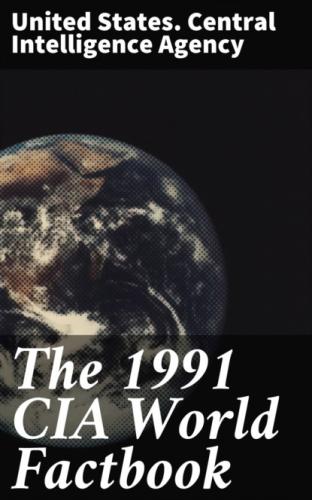_#_Currency: New Zealand dollar (plural—dollars); 1 New Zealand dollar (NZ$) = 100 cents
_#_Exchange rates: New Zealand dollars (NZ$) per US$1—1.6798 (January 1991), 1.6750 (1990), 1.6711 (1989), 1.5244 (1988), 1.6886 (1987), 1.9088 (1986), 2.0064 (1985)
_#_Fiscal year: 1 April-31 March
_*Communications #_Highways: 187 km total (1980); 35 km paved, 35 km gravel, 84 km improved earth, 33 km unimproved earth
_#_Ports: Avatiu
_#_Civil air: no major transport aircraft
_#_Airports: 7 total, 6 usable; 1 with permanent-surface runways; none with runways over 2,439 m; 3 with runways 1,220–2,439 m
_#_Telecommunications: stations—2 AM, no FM, no TV; 10,000 radio receivers; 2,052 telephones; 1 Pacific Ocean INTELSAT earth station
_*Defense Forces #Note: defense is the responsibility of New Zealand % @Coral Sea Islands (territory of Australia) *Geography #_Total area: undetermined; includes numerous small islands and reefs scattered over a sea area of about 1 million km2, with Willis Islets the most important
_#_Comparative area: undetermined
_#_Land boundaries: none
_#_Coastline: 3,095 km
_#_Maritime claims:
Exclusive fishing zone: 200 nm;
Territorial sea: 3 nm
_#_Climate: tropical
_#_Terrain: sand and coral reefs and islands (or cays)
_#_Natural resources: negligible
_#_Land use: arable land 0%; permanent crops 0%; meadows and pastures 0%; forest and woodland 0%; other, mostly grass or scrub cover 100%; Lihou Reef Reserve and Coringa-Herald Reserve were declared National Nature Reserves on 3 August 1982
_#_Environment: subject to occasional tropical cyclones; no permanent fresh water; important nesting area for birds and turtles
_#_Note: the islands are located just off the northeast coast of Australia in the Coral Sea
_*People #_Population: 3 meteorologists (1991)
_*Government #_Long-form name: Coral Sea Islands Territory
_#_Type: territory of Australia administered by the Minister for Arts, Sport, the Environment, Tourism, and Territories Roslyn KELLY
_#_Flag: the flag of Australia is used
_*Economy #_Overview: no economic activity
_*Communications #_Ports: none; offshore anchorages only
_*Defense Forces #Note: defense is the responsibility of Australia; visited regularly by the Royal Australian Navy; Australia has control over the activities of visitors % @Costa Rica *Geography #_Total area: 51,100 km2; land area: 50,660 km2; includes Isla del Coco
_#_Comparative area: slightly smaller than West Virginia
_#_Land boundaries: 639 km total; Nicaragua 309 km, Panama 330 km
_#_Coastline: 1,290 km
_#_Maritime claims:
Continental shelf: 200 nm;
Exclusive economic zone: 200 nm;
Territorial sea: 12 nm
_#_Climate: tropical; dry season (December to April); rainy season (May to November)
_#_Terrain: coastal plains separated by rugged mountains
_#_Natural resources: hydropower potential
_#_Land use: arable land 6%; permanent crops 7%; meadows and pastures 45%; forest and woodland 34%; other 8%; includes irrigated 1%
_#_Environment: subject to occasional earthquakes, hurricanes along Atlantic coast; frequent flooding of lowlands at onset of rainy season; active volcanoes; deforestation; soil erosion
_*People #_Population: 3,111,403 (July 1991), growth rate 2.5% (1991)
_#_Birth rate: 27 births/1,000 population (1991)
_#_Death rate: 4 deaths/1,000 population (1991)
_#_Net migration rate: 2 migrants/1,000 population (1991)
_#_Infant mortality rate: 15 deaths/1,000 live births (1991)
_#_Life expectancy at birth: 75 years male, 79 years female (1991)
_#_Total fertility rate: 3.2 children born/woman (1991)
_#_Nationality: noun—Costa Rican(s); adjective—Costa Rican
_#_Ethnic divisions: white (including mestizo) 96%, black 2%, Indian 1%, Chinese 1%
_#_Religion: Roman Catholic 95%
_#_Language: Spanish (official), English spoken around Puerto Limon
_#_Literacy: 93% (male 93%, female 93%) age 15 and over can read and write (1990 est.)
_#_Labor force: 868,300; industry and commerce 35.1%, government and services 33%, agriculture 27%, other 4.9% (1985 est.)
_#_Organized labor: 15.1% of labor force
_*Government #_Long-form name: Republic of Costa Rica
_#_Type: democratic republic
_#_Capital: San Jose
_#_Administrative divisions: 7 provinces (provincias, singular—provincia); Alajuela, Cartago, Guanacaste, Heredia, Limon, Puntarenas, San Jose
_#_Independence: 15 September 1821 (from Spain)
_#_Constitution: 9 November 1949
_#_Legal system: based on Spanish civil law system; judicial review of legislative acts in the Supreme Court; has not accepted compulsory ICJ jurisdiction
_#_National holiday: Independence Day, 15 September (1821)
_#_Executive branch: president, two vice presidents, Cabinet
_#_Legislative branch: unicameral Legislative Assembly (Asamblea Legislativa)
_#_Judicial branch: Supreme Court (Corte Suprema)
_#_Leaders:
Chief of State and Head of Government—President Rafael Angel
CALDERON Fournier (since 8 May 1990); First Vice President German
SERRANO Pinto (since 8 May 1990); Second Vice President Arnoldo LOPEZ
Echandi (since 8 May 1990)
_#_Political parties and leaders:
National Liberation Party (PLN), Rolando ARAYA Monge;
Social Christian Unity Party (PUSC), Rafael Angel CALDERON Fournier;
Marxist Popular Vanguard Party (PVP), Humberto VARGAS Carbonell;
New Republic Movement (MNR), Sergio Erick ARDON Ramirez;
Progressive Party (PP), Isaac Felipe AZOFEIFA Bolanos;
People's Party of Costa Rica (PPC), Lenin ChACON Vargas;
Radical Democratic Party (PRD), Juan Jose ECHEVERRIA Brealey
_#_Suffrage: universal and compulsory at age 18
_#_Elections:
President—last held 4 February 1990 (next to be held February
1994);
results—Rafael Angel CALDERON Fournier 51%, Carlos Manuel
CASTILLO 47%;
Legislative Assembly—last held 4 February 1990 (next to be held February 1994); results—percent of vote by party NA; seats—(57 total) PUSC 29, PLN 25, PVP/PPC 1, regional parties
